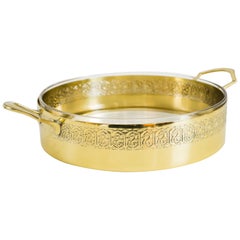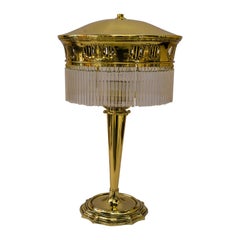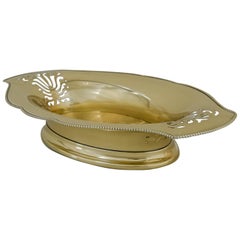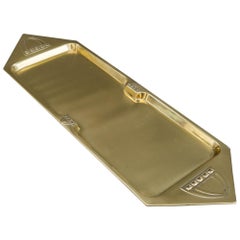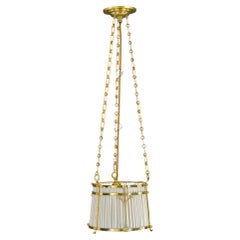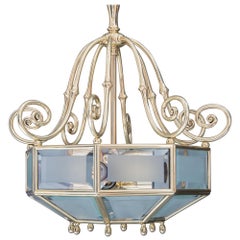Antique Stoves 1920S
1920s Austrian Art Deco Antique Stoves 1920S
Brass
1920s Austrian Art Deco Antique Stoves 1920S
Brass
1920s Austrian Art Deco Antique Stoves 1920S
Brass
1920s Austrian Art Deco Antique Stoves 1920S
Brass
1920s Austrian Art Deco Antique Stoves 1920S
Brass
1920s Austrian Art Deco Antique Stoves 1920S
Brass
1920s Austrian Art Deco Antique Stoves 1920S
Brass
1920s Austrian Art Deco Antique Stoves 1920S
Brass
1920s Austrian Art Deco Antique Stoves 1920S
Brass
1920s Austrian Art Deco Antique Stoves 1920S
Brass
1920s Austrian Art Deco Antique Stoves 1920S
Brass
1920s Austrian Art Deco Antique Stoves 1920S
Brass
1920s Austrian Art Deco Antique Stoves 1920S
Brass
1920s Austrian Art Deco Antique Stoves 1920S
Brass
1920s Austrian Art Deco Antique Stoves 1920S
Brass
1920s Austrian Art Deco Antique Stoves 1920S
Brass, Copper
1920s Austrian Art Deco Antique Stoves 1920S
Brass, Copper
1920s Austrian Art Deco Antique Stoves 1920S
Brass
1920s Austrian Art Deco Antique Stoves 1920S
Brass
1920s Austrian Art Deco Antique Stoves 1920S
Brass
1920s Austrian Art Deco Antique Stoves 1920S
Brass
1920s Austrian Art Deco Antique Stoves 1920S
Brass
1920s Austrian Art Deco Antique Stoves 1920S
Brass
1920s Austrian Art Deco Antique Stoves 1920S
Brass
1920s Austrian Art Deco Antique Stoves 1920S
Brass
1920s Austrian Art Deco Antique Stoves 1920S
Brass, Nickel
1920s Austrian Art Deco Antique Stoves 1920S
Brass
1920s Austrian Art Deco Antique Stoves 1920S
Brass
1920s Austrian Art Deco Antique Stoves 1920S
Brass
1920s Austrian Art Deco Antique Stoves 1920S
Brass
1920s Austrian Art Deco Antique Stoves 1920S
Brass
1920s Austrian Art Deco Antique Stoves 1920S
Brass, Nickel
1920s Austrian Art Deco Antique Stoves 1920S
Alpaca
1920s Austrian Art Deco Antique Stoves 1920S
Brass
1920s Austrian Art Deco Antique Stoves 1920S
Brass
1920s Austrian Art Deco Antique Stoves 1920S
Brass
1920s Austrian Art Deco Antique Stoves 1920S
Brass
1920s Austrian Art Deco Antique Stoves 1920S
Brass
1920s Austrian Art Deco Antique Stoves 1920S
Brass
1920s Austrian Art Deco Antique Stoves 1920S
Brass
1920s Austrian Art Deco Antique Stoves 1920S
Brass
1920s Austrian Art Deco Antique Stoves 1920S
Brass
1920s Austrian Art Deco Antique Stoves 1920S
Brass
1920s Austrian Art Deco Antique Stoves 1920S
Brass
1920s Austrian Art Deco Antique Stoves 1920S
Brass
1920s Italian Art Deco Antique Stoves 1920S
Brass
1920s Austrian Art Deco Antique Stoves 1920S
Alpaca
1920s Austrian Art Deco Antique Stoves 1920S
Brass
1920s Austrian Art Deco Antique Stoves 1920S
Brass
1920s Austrian Art Deco Antique Stoves 1920S
Brass
1920s Austrian Art Deco Antique Stoves 1920S
Brass
1920s Austrian Art Deco Antique Stoves 1920S
Brass
1920s Austrian Art Deco Antique Stoves 1920S
Brass
1920s Austrian Art Deco Antique Stoves 1920S
Brass
1920s Austrian Art Deco Antique Stoves 1920S
Brass
1920s Austrian Art Deco Antique Stoves 1920S
Brass
1920s Austrian Art Deco Antique Stoves 1920S
Brass
1920s Austrian Art Deco Antique Stoves 1920S
Brass, Copper
1920s Austrian Art Deco Antique Stoves 1920S
Brass, Copper
1920s Austrian Art Deco Antique Stoves 1920S
Brass
- 1
Antique Stoves 1920S For Sale on 1stDibs
How Much are Antique Stoves 1920S?
A Close Look at Art-deco Furniture
Art Deco furniture is characterized by its celebration of modern life. More than its emphasis on natural wood grains and focus on traditional craftsmanship, vintage Art Deco dining chairs, tables, desks, cabinets and other furniture — which typically refers to pieces produced during the 1920s and 1930s — is an ode to the glamour of the “Roaring Twenties.”
ORIGINS OF ART DECO FURNITURE DESIGN
- Emerged in the 1920s
- Flourished while the popularity of Art Nouveau declined
- Term derives from 1925’s Exposition Internationale des Arts Décoratifs et Industriels Modernes (International Exhibition of Modern Decorative and Industrial Arts) in Paris, France
- Informed by Ancient Egypt, Cubism, Futurism, Louis XVI, De Stijl, modernism and the Vienna Secession; influenced Streamline Moderne and mid-century modernism
CHARACTERISTICS OF ART DECO FURNITURE DESIGN
- Bold geometric lines and forms, floral motifs
- Use of expensive materials such as shagreen or marble as well as exotic woods such as mahogany, ebony and zebra wood
- Metal accents, shimmering mirrored finishes
- Embellishments made from exotic animal hides, inlays of mother-of-pearl or ivory
ART DECO FURNITURE DESIGNERS TO KNOW
VINTAGE ART DECO FURNITURE ON 1STDIBS
Few design styles are as universally recognized and appreciated as Art Deco. The term alone conjures visions of the Roaring Twenties, Machine Age metropolises, vast ocean liners, sleek typography and Prohibition-era hedonism. The iconic movement made an indelible mark on all fields of design throughout the 1920s and ’30s, celebrating society’s growing industrialization with refined elegance and stunning craftsmanship.
Widely known designers associated with the Art Deco style include Émile-Jacques Ruhlmann, Eileen Gray, Maurice Dufrêne, Paul Follot and Jules Leleu.
The term Art Deco derives from the name of a large decorative arts exhibition held in Paris in 1925. “Art Deco design” is often used broadly, to describe the work of creators in associated or ancillary styles. This is particularly true of American Art Deco, which is also called Streamline Moderne or Machine Age design. (Streamline Moderne, sometimes known as Art Moderne, was a phenomenon largely of the 1930s, post–Art Nouveau.)
Art Deco textile designers employed dazzling floral motifs and vivid colors, and while Art Deco furniture makers respected the dark woods and modern metals with which they worked, they frequently incorporated decorative embellishments such as exotic animal hides as well as veneers in their seating, case pieces, living room sets and bedroom furniture.
From mother-of-pearl inlaid vitrines to chrome aviator chairs, bold and inventive works in the Art Deco style include chaise longues (also known as chaise lounges) and curved armchairs. Today, the style is still favored by interior designers looking to infuse a home with an air of luxury and sophistication.
The vintage Art Deco furniture for sale on 1stDibs includes dressers, coffee tables, decorative objects and more.
- What do I wear to a 1920s party?1 Answer1stDibs ExpertMarch 3, 2023To a 1920s party, you can wear a short fringed or beaded flapper dress, layers of long beaded or pearl necklaces, elbow-length gloves and a feathered headband. Another option is to wear an off-white men's suit. Shop a selection of vintage apparel on 1stDibs.
- 1stDibs ExpertMarch 22, 2022In the 1920s, flappers often wore straight, fitted dresses with plunging necklines and knee-length hems. Fringe was a common embellishment used at the time. Flappers also sported pumps and opted for bras and lingerie instead of corsets for undergarments. Shop a variety of vintage clothing on 1stDibs.
- What is 1920s furniture called?1 Answer1stDibs ExpertNovember 13, 2024What 1920s furniture is called depends on its style. However, the most prominent design style of the decade was Art Deco. The term alone conjures visions of the Roaring Twenties, Machine Age metropolises, vast ocean liners, sleek typography and Prohibition-era hedonism. The iconic movement made an indelible mark on all fields of design throughout the 1920s and ’30s, celebrating society’s growing industrialization with refined elegance and stunning craftsmanship. Art Deco furniture often featured bold geometric lines, floral forms, shimmering mirrored finishes, sleek metal accents, and the use of expensive materials such as shagreen or marble as well as exotic woods such as mahogany, ebony and zebra wood. On 1stDibs, find a diverse assortment of Art Deco furniture.
- 1stDibs ExpertJune 15, 2023In the 1920s, fashionable colors included jewel tones. Fashion, jewelry, furniture and decorative objects often featured jade green, deep reds, amethyst purple, dusty mustard yellow and peacock blue. Find a range of 1920s-era jewelry and fashion on 1stDibs.
- 1stDibs ExpertMay 5, 2023In the 1920s, brides often wore tubular-shaped slip dresses with a beaded tunic over top. Hemlines usually fell just below the knee or to the ankle, and many gowns had dropped waists. For headwear, brides often showed off veils attached to cloche or flapper-style headbands. On 1stDibs, shop a collection of wedding dresses from some of the world’s top boutiques.
- 1stDibs ExpertApril 5, 2024The clothing style in the 1920s that most people think of first is the flapper style. Women who dressed in this style sported loose-fitting, short dresses, often outfitted with drop waists and fringe. Small cloche hats and headbands were signature accessories of the flapper look. During the decade, pleated tennis skirts and cardigan sweater sets left the courts and became staples of some women's everyday styles. For men, soft collars replaced stiff, starched ones, and simple single and double-button suit jackets worn without waistcoats became trendy. Trousers also took on a new shape with wider-cut legs, and Oxford bags gained popularity. On 1stDibs, shop a variety of 1920s apparel and accessories.
- What are 1920s dresses called?1 Answer1stDibs ExpertFebruary 13, 2023The iconic dresses from the 1920s are called flapper dresses. This name comes from the term flapper, which was used to describe young women during the period who enjoyed personal fulfillment and independence in American cities, particularly as they gained the right to vote and enjoy other freedoms previously reserved for men. Flappers danced at jazz clubs and upended most societal restrictions placed on women at the time, and fashion statements typically attributed to flappers included short “bob” haircuts, higher hemlines and other then-audacious style choices. Find a selection of flapper dresses on 1stDibs.
- What era is 1920s jewelry?1 Answer1stDibs ExpertDecember 4, 2023What era 1920s jewelry is depends on its design. Most people associate this decade with the Art Deco movement, which took inspiration from eclectic sources like Cubism, ancient Egypt and Native American, African and Asian motifs. However, some pieces produced during the 1920s are more in line with the style trends of earlier periods, such as Art Nouveau, Edwardian and Victorian. Explore a diverse assortment of 1920s jewelry on 1stDibs.
- 1stDibs ExpertMay 5, 2023The type of tile that was used in the 1920s was primarily ceramic. Many shapes were available, including basketweave, penny round, pinwheel, square and subway. Hexagon tiles, however, which are still on trend, have been in use in bathrooms since at least the early 1900s. The choice of hexagonal tiles is believed to have been tied to cleanliness, as the small pieces could stand up to aggressive cleaning and could be easily replaced if needed. On 1stDibs, shop a collection of tiles from some of the world's top sellers.
- 1stDibs ExpertApril 5, 2022Flapper dresses from the 1920s came in a range of colors, although darker hues such as black and navy were immensely popular. Flapper dresses were cut with straight and slim silhouettes, were typically knee-length and had a lower neckline. They were often made from silk chiffon and featured beaded details. You’ll find a selection of 1920s flapper dresses from some of the world’s top sellers on 1stDibs.
- 1stDibs ExpertNovember 21, 2023In the 1920s, engagement rings still looked like rings but were representative of a diverse range of styles and influences. Art Deco diamond ring designs took inspiration from the contemporary Cubist movement as well as from ancient Egypt – a revival sparked by the opening of King Tut’s tomb in 1922. Native American, African and Asian motifs also inspired jewelry pieces. Diamonds in square and rectangular shapes incorporating angular steps – like emerald cuts, Asscher cuts and baguettes – were set against black onyx, rubies, sapphires and emeralds to create color-blocking effects. Platinum, 18-karat gold, 14-karat white gold and sterling silver were some of the favored metals of the decade. Find a wide range of Art Deco engagement rings on 1stDibs.
- 1stDibs ExpertJanuary 10, 2025Coco Chanel was considered one of the leading fashion designers in the 1920s and ’30s in Paris. The first Chanel shop was established in 1910 on rue Cambon by the young milliner Gabrielle Chanel, who had picked up the nickname “Coco” while working as a club singer. The boutique drew the attention of the Parisian fashion elite, who popularized her wide-brimmed Chanel Modes hats. Soon, she added a sportswear store in the Normandy resort town of Deauville, where Coco set the tone for her defining sense of style — traditionally masculine garments reimagined for feminine shapes, made from simple jersey fabric. Effortless and elegant, Chanel's designs promoted comfort and grace in women’s wear that had been dominated in the previous century by complicated layers of fabric and cumbersome corsets. She followed this success with a couture house, opened in 1915 in Biarritz. In 1926, Chanel introduced her first little black dress, reclaiming a color that had once been reserved for mourning and working-class women. That same decade, she debuted her perfume, Chanel No. 5, as well as the Chanel suit with a fitted skirt, inspired by the boxy lines of men’s clothing and employing a sporty tweed. During the 1920s, she also unveiled the predecessor for the 2.55 Flap bag, which remains one of Chanel's most popular offerings. Shop a large selection of Chanel apparel, bags and accessories on 1stDibs.
Read More
This Onyx, Diamond and Sapphire Ring Is an Art Deco Stunner
The exquisite French jewel feels as modern today as when it was created, nearly a century ago.
Eileen Gray’s Famed Cliffside Villa in the South of France Is Returned to Its Modernist Glory
After years of diligent restoration, E-1027, the designer-cum-architect’s marriage of romance and modernism, is finally complete.
A 1920s Art Deco Necklace with a Stunning Drop Emerald
The cabochon gem centerpiece and diamond-set elliptical rings makes it a marvel of Gatsby-era glamour.
Cartier: The Jeweler Who Helped Define Art Deco
Cartier created some of the most iconic jewelry designs that defined this era.
Our Guide to Victorian, Edwardian and Art Deco Engagement Rings
Learn about these antique jewelry styles, then choose a design that speaks to you.
Why Vintage Watches Are Making a Comeback
Men, women and the watchmakers themselves are falling for the old-fashioned charm of retro timepieces.
The Process: 5 Creators of Chic Customizable Lighting
Bespoke lighting is a hallmark of upscale interiors, and contemporary makers are increasingly ambitious in their materials and forms.
An Incomparable Trove of Art Deco Treasures Is on View in Miami Beach
Heading to Florida for the art and design fairs in early December? Make time on your schedule to visit a newly opened exhibition that examines the movement's migration from Europe to America, and its evolution from niche to universal appeal.

